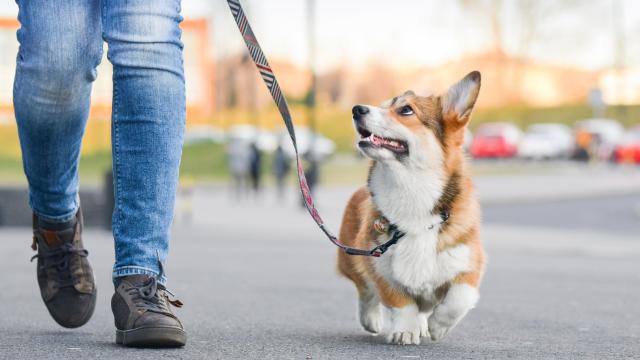As far as side hustles go, dog walking sounds like a sweet deal: Get some time with cute pups, get your steps in, and get paid. But like with most aspects of the gig economy, how much money you actually make depends on a lot of factors. How you advertise your services and your flexibility with your business will greatly impact how much money you get to take home — and that’s after dog walking apps take a cut of your earnings. Here’s what to know about how much you can really earn as a dog walker these days.
Figure out your dog walking rates
HomeGuide reports the following average rates for dog walkers, depending on the additional pet care provided and the sort of clientele you’re working with:
- Low-end dog walking services: $US10 ($14) per 30-minute walk
- Mid-range dog walking services: $US20 ($28) per 30-minute walk
- High-end dog walking services: $US35 ($49) or more per 30-minute walk
How many walks you’re likely to get depends on how many dogs need to be walked in your area. If you’re able to commute between numerous neighbourhoods and expand your radius, you can increase your odds of picking up more pets to walk.
While the rates you set are important for finding new business, when it comes to dog walking, loyal customers are your best bet to create a reliable stream of income. Think about it like this: If you hit it off with just one pet owner in your area for a rate of $US20 ($28)/30-min walk, and that dog needs to be walked three times a day, five days a week, then you could be bringing in an extra $US300 ($416) every week.
Rover, Wag, and other apps will take a percentage
Popular dog walking apps Rover and Wag follow similar gig-based models like Uber or DoorDash. And in true gig-based startup fashion, these apps take a hefty chunk via service fees. For instance, Rover takes a 20% cut service fee from each booking. Wag, on the other hand, charges twice that with a 40% service fee. So while dog owners feel like they’re paying a fairly expensive price for each walk, you won’t be seeing those high rates in your payout.
Most apps will allow you to set your own rate, so you could theoretically increase your price to cover the app’s 20-40% service fees. However, that obviously means you’ll need to find customers who are willing to pay your competitive rates, and you’ll likely get more business with more moderate prices. Also worth mentioning: Wag has a non-refundable $US30 ($42) application fee that you pay before you’re even approved as a dog walker.
The bottom line
When it comes to dog walking, you want to find repeat customers that you get along with. To find reliable clients in your area, I’d suggest making an account with Rover (Wag’s application and service fees make it a Plan B). Once you have a routine, pitch the idea to establish your business with them off-app. Make it clear that this is a win-win: You could afford to lower your rates after eliminating the app’s service fees, and you earn more money. Your ultimate goal is to find a regular stream of repeat customers without third-party apps taking a chunk of your payout.

Leave a Reply
You must be logged in to post a comment.